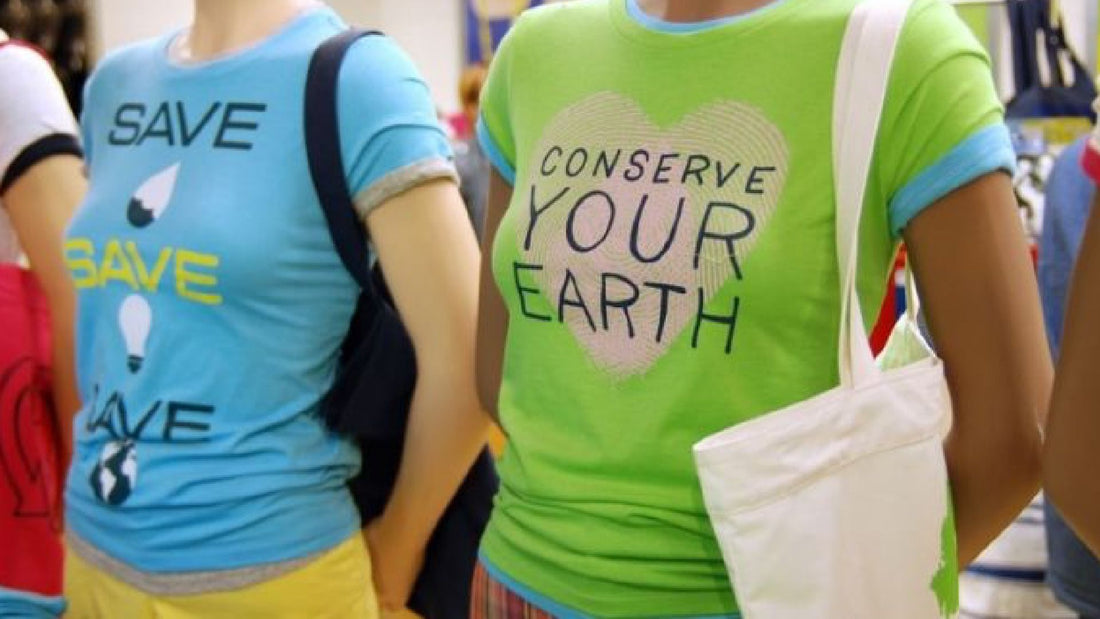
What You Need To Know About Greenwashing (And How To Spot It)
Share
What does ‘green marketing’ mean to you?
You may have noticed that ‘green’ has become a marketing strategy that is more popular than ever.
As consumer concerns linked to the global and local environment increases, companies have responded to show they are also listening to these concerns.
Yet, if all these companies are actually being responsible for the environment as they are claiming, why is the world still in such a mess?
The question may be complicated, but the answer is simple -’greenwashing’.
Before you read on, are you looking for truly sustainable products? Explore the online range here:
- Dog waste
- Commercial waste
- Compost bins
What Is Greenwashing?
In simple terms, greenwashing can be compared to whitewashing.
Think about when painting a thin layer of paint that is white over something to make it look white, yet when this paint starts rubbing off or chipping, everyone will start to notice that the surface underneath is not actually white.
In a similar way, greenwashing involves using a thin layer or veneer of "green" when it comes to the way companies market their services and products, yet when you start scratching the surface, it is easy to see that these practices are not really sustainable.
Instead, it is business-as-usual for these companies in their attempts to sell greenwashed products to consumers.
This is extremely frustrating for most consumers.
We not only need to keep in mind that we should be looking for environmentally responsible and social products, and in some cases have to fork out more for these product types, but we also now have to find out about the legitimacy and authenticity of these claims about these products.
However, there are a few ways that you can detect greenwashing so that you can rather spend your hard-earned money on the companies that are making positive impacts when it comes to the planet.
Even though the agencies like Greenpeace work actively to uncover and expose greenwashing, there are not many comprehensive tools that can assist consumers when it comes to knowing the difference.
The ideal way to sniff out greenwashing would be to think and act like a child by asking as many questions as you can.
Below is a list of questions you may want to ask to ensure you are not falling for these greenwashed tactics.
“What Does ‘Greenwashing’ Really Mean?”
The more common greenwashing form would include vagueness.
Companies use words, colour schemes, or symbols on the packaging of their products that make consumers think of "greenness" or "nature", whatever that might mean.
Yet the real truth behind this type of "nature-art" on the packages is the fact that nature-art doesn't really mean anything on its own.
Claims such as "plant-based", "nature-based", "all-natural", and in some cases even "organic" (with no certifications, that we will discuss further later), are products that are unregulated and it actually means nothing when it comes to the "greenness" of the contents of a product, if it is biodegradable, manufacturing, or the ingredients.
Look at the labels and read over the ingredients.
Cake maker Pearl Toh has seen first-hand how caterers, hospitality businesses and the food packaging industry has blurred the line between fact and fiction. She recommends people “try to see if they give details on why the product is "green", because the businesses that are doing something that is unusually environmental, will want to advertise this to their customers.”
“Is The Claim About The Packaging Or The Product?”
At the end of the day, it is important that both the packaging and the product is sustainable. Yet, many companies trick consumers into thinking that their products are recyclable, recycled, and green, when the truth is that it is only the actual packaging that is green, recyclable, and recycled.
For example, there is toilet paper that contains recycled paper. However, in some cases this refers to the package, NOT the product itself.
These brands often use a symbol that looks familiar, yet the truth is that the wrapper around the product was made from 52% plant plastic and 48% petroleum.
Would you be able to separate the plant plastic from the petroleum plastic and then put the petroleum-plastic into a recycle bin and the plant plastic into a composter? No. So this product is actually not "green" at all.
On the other hand, some companies advertise that their products are green, yet the product is when wrapped up in something that is harmful to the environment.
“Greening products may be a good start”, explain eCommerce entrepreneurs Tow and Line who deal closely with packaging and waste matters. “Yet the companies that are actually serious about the green movement approach should ensure that their entire product line is green, which includes the packaging.”
“Where Does This Product Come From?”
The question might be broad, yet it can be helpful when you start comparing different varieties or brands of one product.
Think about soap.
All soaps are made from a type of oil, some are made from animal or plant oils, while others are made from petroleum oils.
So if you would like a plant-based soap rather than a petroleum-based soap, you should be asking:
- "Where did these plant oils come from?"
- “Were these plants organically grown or did they use chemicals and petroleum-based fertilisers when growing them?”
- “Was the area deforested in order to create the space where the plants are grown?”
It may be possible that a plant-based soap used a lot more petroleum in order to produce when compared to petroleum-based soaps.
“Where Will The Product Go Once I Am Done With It?”
Is the packaging or product recyclable, or has it been made from many materials and layers that cannot be separated?
Is the product compostable, and if it is would it have to go through industrial composters?
For example, many companies claim to "close the loop". This might occur by turning plastic gloves into recycled trash bags.
However, a real "closed-loop" suggests that the item will never land up in landfills, and be reused and recycled indefinitely.
In the case of gloves turned bags, the bags still do end up in landfill.
This is an example of ‘greenwashing’.
“Has An Outside Organisation Certified This Product?”
This is the fastest reference you can use as a consumer.
Even though these companies are not perfect, most 3rd party organisations certify products independently, which offers a helpful and quick reference.
More than a sustainable choice, these certifications can impact your own health, notes physical wellness expert Jacqui Herrman. She says “the internet is a great place to start any product research. What you put in your body can never be an afterthought, so if you’re unsure, take a few minutes to search online. A few minutes now can have huge implications on your physical health down the line.”
Look out for seals like:
- "Non-GMO Project"
- "Fair Trade Certified"
- "Rainforest Alliance Certified"
And more to find out if somebody else researched their products backed by putting their approval stamp on it.
Looking for more ways to reduce your carbon footprint and make sustainable choices?
Get in touch with the team at Biotuff and find out more!

We will only handle press inquiries. If you have questions regarding an order please contact our customer care. media@biotuff.com.au
In the spirit of reconciliation, Biotuff Australia acknowledges the Traditional Custodians of the country throughout Australia and their connections to land, sea and community.
We pay our respects to their elders past, present and emerging, and extend that respect to all Aboriginal and Torres Strait Islander peoples today and everyday.
